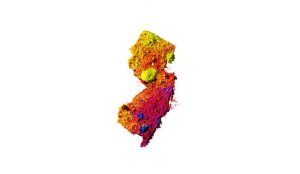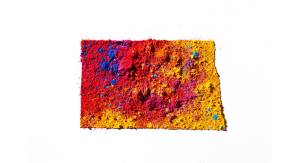AASHTO highlights state transportation technology

Numerous states are using technology in innovative ways to keep infrastructure operating safely, according to the American Association of State Highway and Transportation Officials.
The forward-thinking technologies include sensors installed on bridges and in roadways, so maintenance vehicles can communicate real-time performance and weather data to allow engineers to solve problems before they occur.
“Most people look at a road or a bridge and never realize the technology that today’s modern transportation agencies are using to help our transportation system function at its best,” Wright said. “State DOTs are dramatically improving the way transportation systems, services and information are being delivered, shared and utilized all across the country.”
The North Carolina Department of Transportation is using 3-D imaging to improve the process of conducting annual pavement condition surveys, which previously relied on visual assessments taken from slow moving vehicles on highway shoulders. Now, a forward-looking camera captures images on the highway while a 3-D camera photographs the pavement.
Those images are then analyzed using a special software program that detect pavement defects. That data is used to calculate pavement quality and identify problems that engineers can use to make more accurate decisions.
At least 14 states have begun using a smart mapping computer program called, “UPlan.” These maps use real-time information data banks both inside and outside of transportation agencies to make it easier to see how proposed transportation projects will interface with the surrounding environment.
Many states are also using “smart bridge” technology. The Minnesota Department of Transportation’s I-35 Bridge in Minneapolis has hundreds of scanners positioned throughout the structure that provide data on vibration and corrosion. They can also activate anti-icing systems, alert authorities when secure areas have been breached and detect bridge strikes.
The Nevada Department of Transportation Structures Division partnered with the University of Nevada-Reno to make the Galena Creek Bridge in Pleasant Valley, Nev., a smart bridge. It includes an instrumentation system on the arches that allows the DOT to perform structural health monitoring to continually evaluate the bridge’s strength with real-time data communicated over the Internet.
The Oklahoma Department of Transportation and Oklahoma Department of Public Safety have teamed up to more efficiently process permit requests and create safe routes for commercial trucks carrying oversized or overweight loads. The Oklahoma Permitting and Routing Optimization System, dubbed OKiePROS, uses advanced GPS technology and real-time geographic and bridge information to quickly process requests online. Permits for oversized or overweight truckloads which used to take several days to issue, can now be processed in about 10 minutes.
Design and implementation of OKiePROS cost about $2.4 million and was funded through an appropriation by the state legislature. Last year, in its first year of operation, the program generated nearly $47 million in revenue as Oklahoma issued more than 250,000 permits, shattering previous state records.
The same kind of technology is being used in weather monitoring, AASHTO said. The Alaska Department of Transportation and Public Facilities (ADOT&PF) is equipping its fleet of maintenance vehicles with instruments to gather location-specific temperature and humidity data along roadways. The data are fed to a weather modeling system, which can forecast when and where roadway icing is likely to occur and the proper equipme





